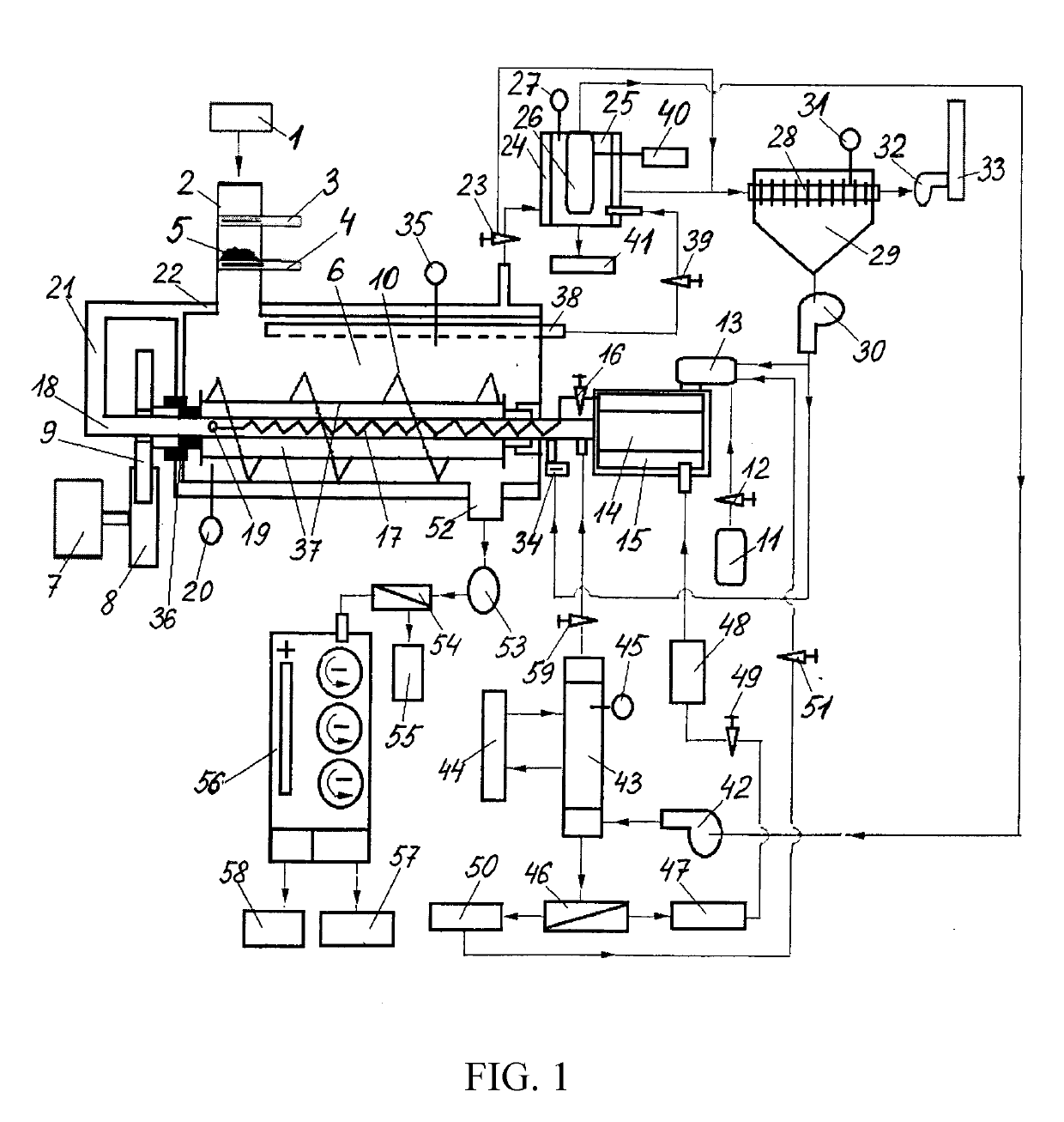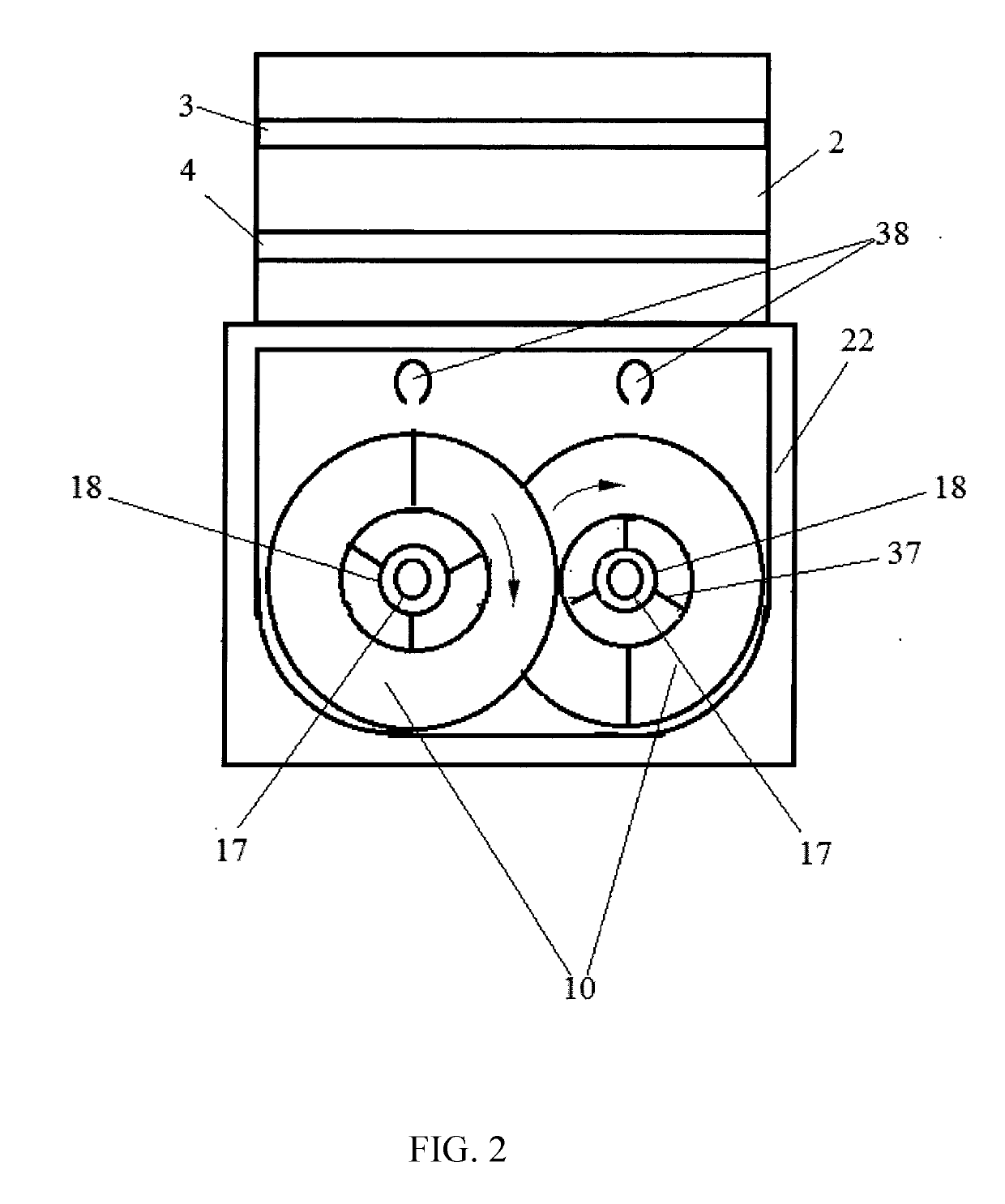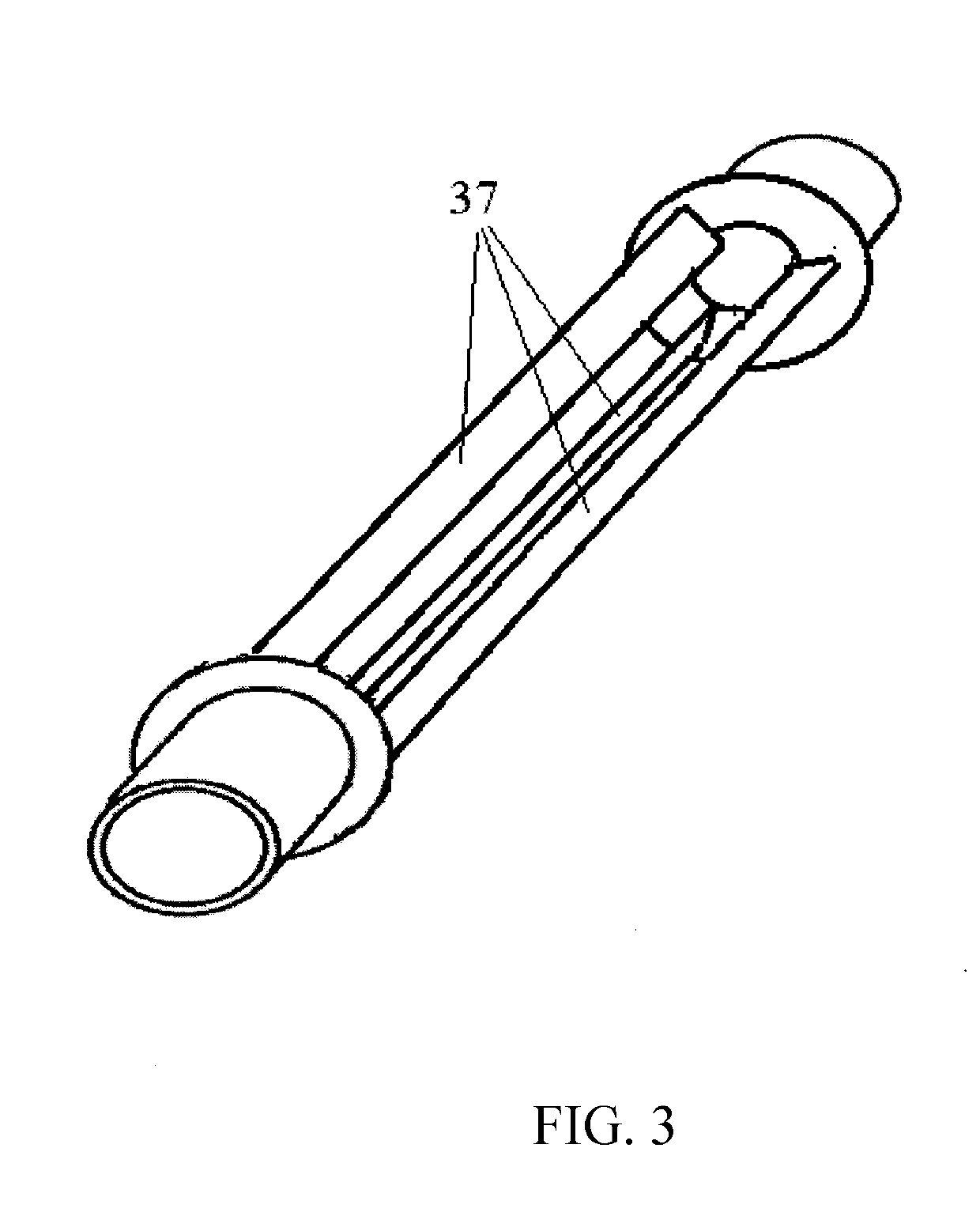Device for Processing Scrap Rubber
a technology for scrap rubber and rubber slag, which is applied in the direction of gasification process details, special form destructive distillation, tyres, etc., can solve the problems of carbon surface oxidation, quality degradation, etc., and achieves the reduction of liquid fuel consumption, the effect of improving solid residue quality, and avoiding the loss of valuable liquid products
- Summary
- Abstract
- Description
- Claims
- Application Information
AI Technical Summary
Benefits of technology
Problems solved by technology
Method used
Image
Examples
example 1
[0083]Shredded rubber waste 5 in the form of chips is fed from storage 1 to bin 2 with gates 3 and 4 closed, at the rate of 100 kg every 6 minutes. The dimensions of the rubber chips are: length l=50 mm, width s=50 mm, and height h=30 mm. In this case, the total flow rate of waste is Go=1000 kg / h. When bin 2 has been filled, gate 3 is opened, and waste in the quantity of 100 kg from bin 2 pours down and is checked by gate 4. After this, gate 3 is closed, gate 4 is opened, and waste pours down to reactor 6 and is uniformly distributed, 50 kg to each section of the reactor. Next, gate 4 is closed. Thus, waste is loaded to reactor 6 batch-wise every 6 minutes.
[0084]Simultaneous with the loading of the first batch of waste, gear 8 is set in motion by motor 7 at the speed of 2 rpm. Gear 8 engages first gear 9 connected to first screw 10 and second gear 9 connected to second screw 10. Such connection of the gears with gear 8 in rotation results in screws 10 rotating towards each other. Si...
example 2
[0141]Shredded rubber waste 5 in the form of chips is fed from storage 1 to bin 2 with gates 3 and 4 closed, at the rate of 150 kg every 6 minutes. The dimensions of the rubber chips are: length l=30 mm, width s=50 mm, and height h=20 mm. In this case, the total flow rate of waste is Go=1500 kg / h. When bin 2 has been filled, gate 3 is opened, and waste in the quantity of 150 kg from bin 2 pours down and is checked by gate 4. After this, gate 3 is closed, gate 4 is opened, and waste pours down to reactor 6 and is uniformly distributed, 75 kg to each section of the reactor. Next, gate 4 is closed. Thus, waste is loaded to reactor 6 batch-wise every 6 minutes.
[0142]Simultaneous with the loading of the first batch of waste, gear 8 is set in motion by motor 7 at the speed of 3 rpm. Gear 8 engages first gear 9 connected to first screw 10 and second gear 9 connected to second screw 10. Such connection of the gears with gear 8 in rotation results in screws 10 rotating towards each other. Si...
PUM
 Login to View More
Login to View More Abstract
Description
Claims
Application Information
 Login to View More
Login to View More - R&D
- Intellectual Property
- Life Sciences
- Materials
- Tech Scout
- Unparalleled Data Quality
- Higher Quality Content
- 60% Fewer Hallucinations
Browse by: Latest US Patents, China's latest patents, Technical Efficacy Thesaurus, Application Domain, Technology Topic, Popular Technical Reports.
© 2025 PatSnap. All rights reserved.Legal|Privacy policy|Modern Slavery Act Transparency Statement|Sitemap|About US| Contact US: help@patsnap.com



